24 November, 2001
This morning, I chipped more blue ice from the transition zone. Ice must be
brought in and melted down every day in order to have what is needed for
washing. I also saw the little Adelie in camp again today. We do not
approach the penguin, but take a moment to observe from a distance. It
always catches me by surprise to suddenly see an Adelie Penguin walk by, or
sleeping nearby on the sediment. It is rare to see penguins in this part of
Antarctica. Many people come to Antarctica and leave without getting the
opportunity to see penguins. I feel fortunate to have this as part of my
Antarctic experience.
I sorted forams today, as well as took hydrology measurements with the
PASCO data logger. This equipment allows me to easily take water
temperature and pH of the water at three nearby sites. I have had trouble
getting the needed chemicals for my hydrology study due to the September
11th hijacking, which placed restrictions on what could be brought on the
plane. I hope to find a way to take dissolved oxygen with the PASCO probe,
but I must find a chemical replacement for the solution that I had to leave
behind. When I visited Lake Hoare at Thanksgiving, I spoke with someone
involved with the LTER (Long-Term Environmental Research) project.
Although, I may not be able to get a dissolved oxygen reading here at
Explorers Cove, I will get data from the LTER program. It will be different
from what I would get from sea water at Explorers Cove, but data from the
fresh water lakes in Antarctica would be an interesting comparison for
students taking hydrology measurements from fresh water lakes, streams, and
rivers back home. The 5th grade GLOBE (Global Learning and Observations to
Benefit the Environment: www.globe.gov) team at West Elementary is taking
hydrology measurements on the local creek that runs through our town in Mt.
Juliet, Tennessee. Hopefully, they will be able to make comparisons with
data from Antarctica and with a desert area in Tuscon, Arizona. The first
step in learning is to observe and to investigate. By comparing data in
different parts of the world, students can begin to form questions and seek
answers. How can organisms living in different environments and climates
thrive in different parts of the world? Comparing organisms from one place
to another, as well as the conditions of the water in which they live
enables scientists to piece together different parts of the puzzle. As
students begin to make comparisons, they begin to find the scientists
within themselves. Whether they pursue science, or not, they will become
better learners and make informative decisions about their world.

Dr. Alexander and Dr. Pawlowski left camp this morning to take the next 12 to 14 hour shift at the melt hole site near the Herbertson Glacier.
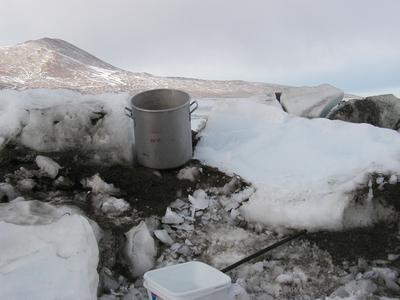
I went out to the transition zone to chip blue ice to be melted down on the preway stove for wash water.
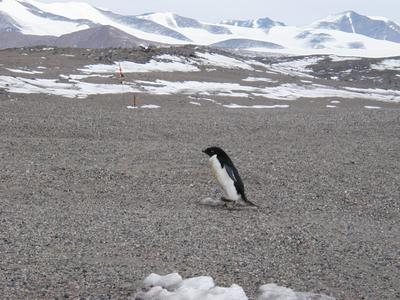
As I walked to the hydrology "marsh" site near our Jamesway hut, I spotted an Adelie penguin walking right past me. We have had several individual Adelie penguins visit our field camp this season.
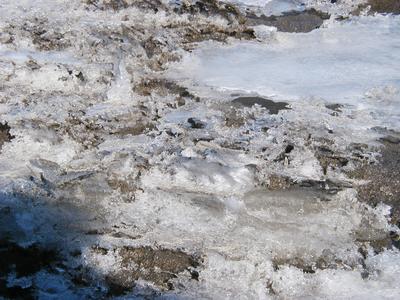
The ground ice is really quite beautiful as I walk around our field camp.

I am using an Xplorer Pasport data logger donated by PASCO Scientific to collect hydrology data at three sites in this "marsh" area. I am using a temperature probe to take the water temperature at this water site. Today, the water temperature at this site was 2.1 degree Celsius (about 35 degrees Fahrenheit). It is warmer than the 28 degree Fahrenheit water that divers scuba in during their dives in Antarctica. The water at this water site is very shallow, yet it supports life. I have found orange algae at this site.

This is hydrology "Site A" with orange algae near the surface.
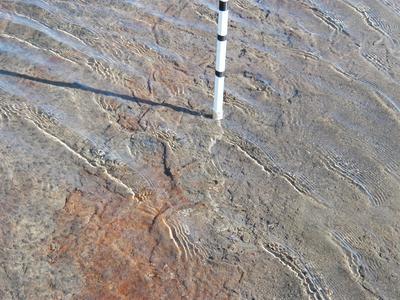
Orange algae at "Site A" in the nearby "marsh"/moat area
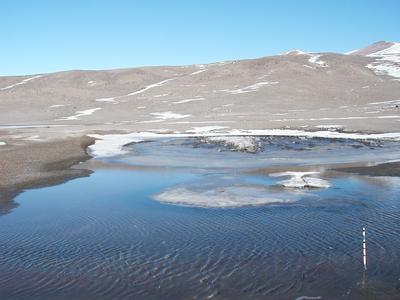
I have noticed extensive melting at "Site A" within the past two days.
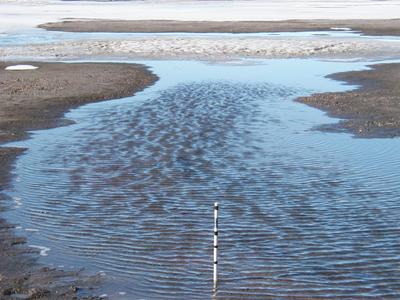
This view of "Site A" shows how the tide brings water from the sea.

This is a view of our field camp near the base of the Taylor Dry Valley.
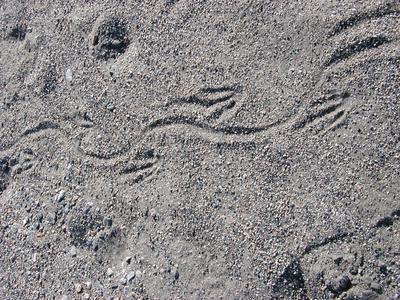
Penguin tracks in our field camp show evidence that the little Adelie had made a visit.
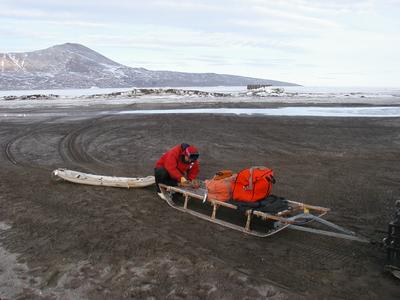
Dr. Bowser is getting the sled ready for our 10:30 p.m. departure to the melt hole site near the Herbertson Glacier. We will be taking the next shift to monitor the melter during the melting of a new dive hole.
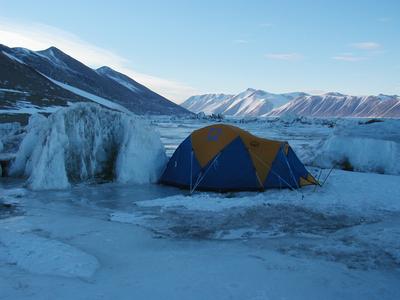
Phil Forte and Dr. Korsun had put up a tent at our remote camp near the Herbertson Glacier to help give shelter from the wind. A wind had early blown the tent across the transition zone, and Phil Forte had to go chase it down by Ski-Doo. In Antarctica, high winds come up without any notice. By the time we arrived at this site, the tent had been securely staked down and protected by the beautiful ice formations surrounding the tent.
Contact the TEA in the field at
.
If you cannot connect through your browser, copy the
TEA's e-mail address in the "To:" line of
your favorite e-mail package.
|
